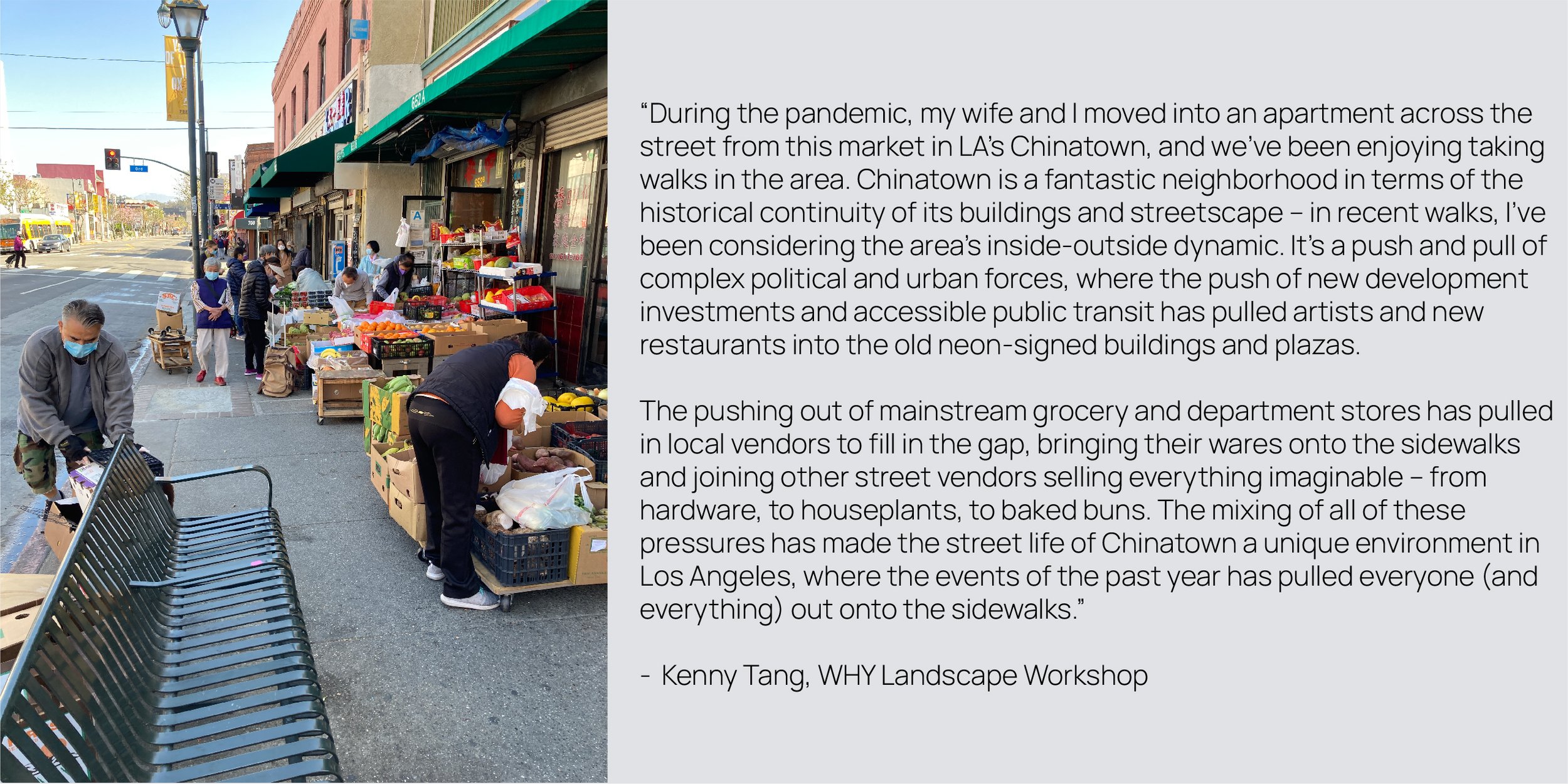The WHY Landscape Workshop: A Walking Practice
Originally published by WHY Architecture
For the WHY Landscape Workshop, walking is a way of working – a practice of retracing steps, allowing ideas to rise, and witnessing patterns of growth and decay.
We walk to work. Or rather, during the pandemic, walking has become a way of working – one of those everyday activities which help us to process information, shake up old thought patterns, and allow new ideas to percolate.
For many of us, the pandemic has limited where we can walk. The same routes around the neighborhood became worn and automatic: back-and-forth to the deli on the corner, or down to the beach where the tide has erased yesterday’s footsteps. But as the writer Robert MacFarlane notes in his book The Old Ways, repetition is no bad thing. “Paths are the habits of a landscape,” he writes. “Like sea channels that require regular dredging to stay open, paths need walking.”
The same might be said of thought-channels. As a practice of sustained noticing, walking the same routes over the course of a year has granted us a period of sustained noticing; a chance to witness the changes in our environment as the seasons shift and time does its work. In this way, walking works upon the walker: pulling them into the present and the patterns of time, opening the mind to ideas which – in the hands of the designer – may later translate to physical form.
As Mark Thomann, Director of the WHY Landscape Workshop, explains, “Unlike designing a building, landscape projects are rarely given a program. We’re faced with an open set of possibilities, and our task as designers is to inspire people to explore that space in their own way.” The combination of an open program and the unpredictable forces of the natural world makes the practice of landscape architecture uniquely unstable – landscape architects must learn to work with nature, welcoming the creative opportunities of chance and change.
Walking for its own sake is one way to remain attentive to those opportunities. When the process of noticing takes over, we are absorbed in our surroundings. Working with nature becomes an accepted fact; we work with nature because we are part of nature.
The WHY Landscape Workshop’s concept of Art & Wilding is a way of expressing that continuum between human communities and the natural world – a intuition which often fades as we age, and returns when we find ourselves in a well-designed landscape. Art & Wilding describes the meeting of creative intent and spontaneous natural growth, where strategic manipulation simultaneously makes way for forms and behaviors which exceed the original design intention.
As a paradigm for landscape design, Art & Wilding proposes a healthy, generative relationship to our surroundings, one which ultimately defies any strict separation between the natural and built environment. If human making is understood in relation to natural growth patterns, how might we witness our cities differently?
A city – like a root structure or a fungal network – can be understood as a system. And all to often, human-made systems outgrow our understanding and cause intractable problems; the social injustices which pervade daily exchanges, or the scale of environmental damage which tests the limits of the imagination.
Systemic problems take time and space to process, and an activity like walking can help to channel that immensity into a manageable, measurable form; a way of recognizing what is there to be seen. The practice of landscape architecture, likewise, is a way of structuring a site which allows what is present to become apparent, revealing the fertile living networks which help to sustain us.
As working practices become more regular and offices reopen, we might remember some of the myriad alternative ways of working and learning that take place as we navigate our environment. At the desk or in front of the screen, we take practical action to ensure that our ideas can become realities – but, arguably, the most generative work takes place beyond conventional settings.
While walking outside, we expose ourselves to sights and sensations which act as ledges to rest our ideas. A hike along Toronto’s Scarborough Bluffs inspires a concept for a vertical park; the way a feather catches the light suggests how a canopy might shield and diffuse. And then there are the underlying connections which occur whether or not we’re aware. Walking is a way of making sense of the world which does not immediately ask anything of us – a practice which is both pragmatic and mysterious, taking the walker to places they never knew existed; places which might later become a park, a sculpture, or a garden.
Originally published by WHY Architecture



